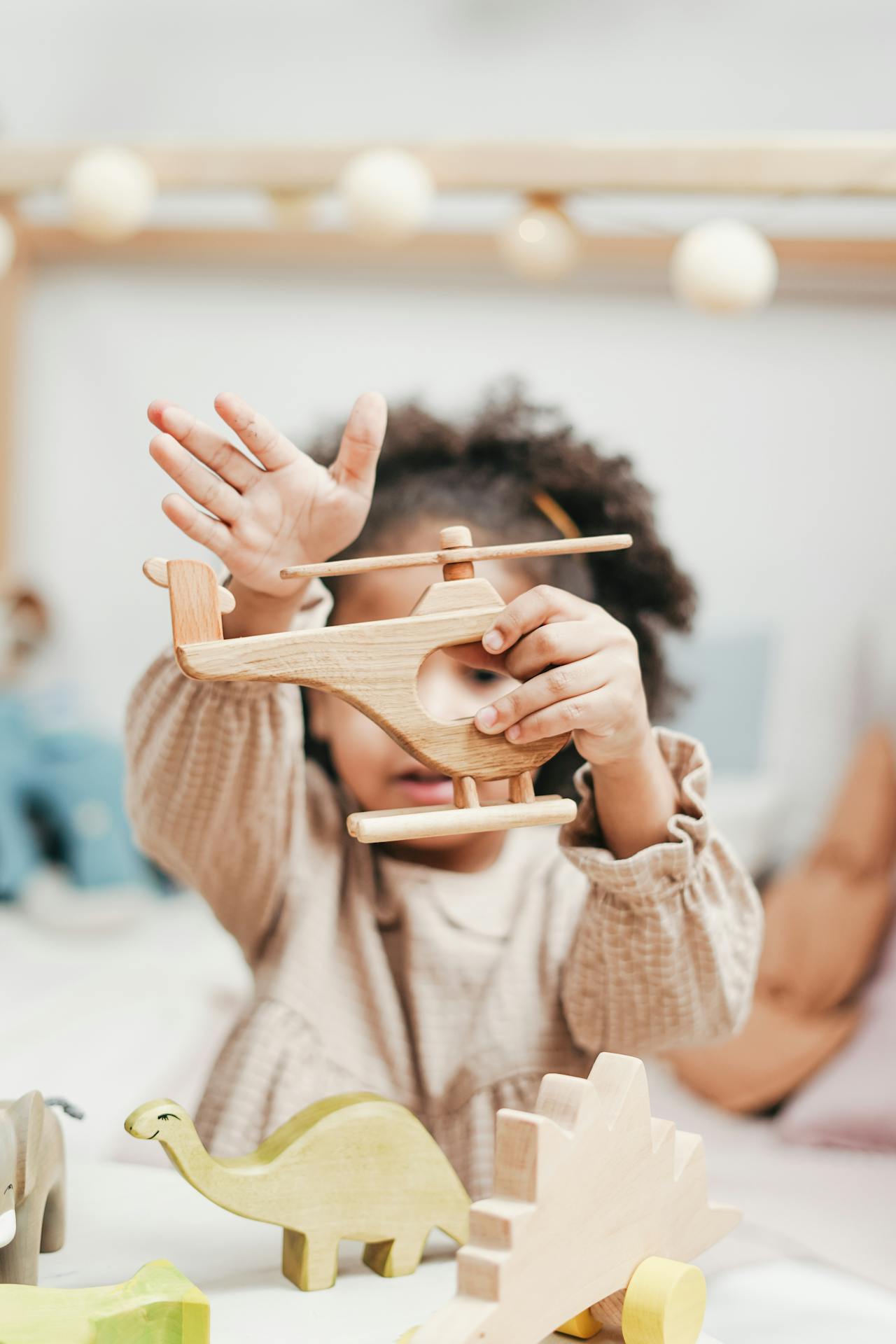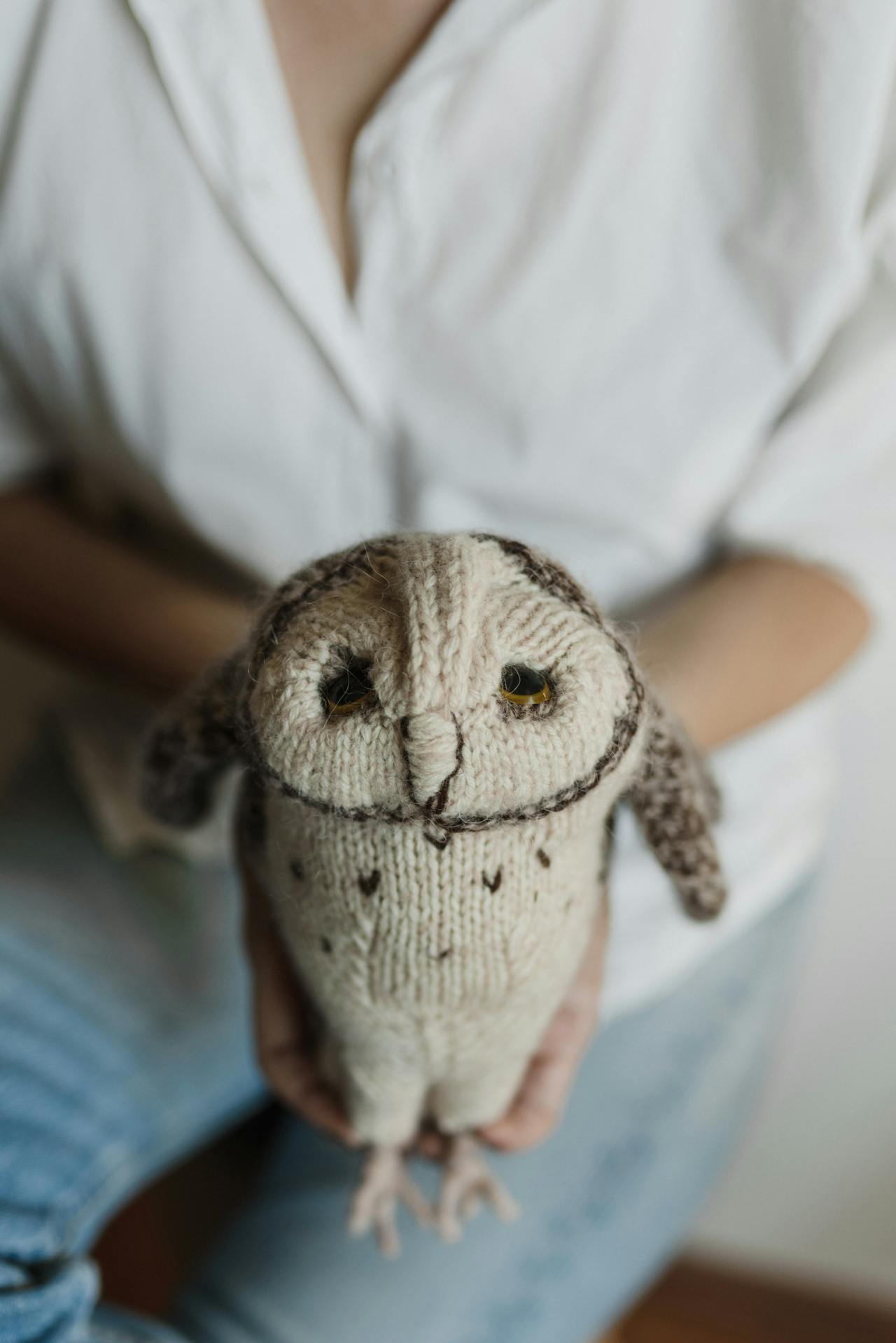Cleaning tips
Children's toys that are used regularly collect dirt, bacteria, and viruses that can lead to infections and allergies. Thorough cleaning is especially important for younger children, who often put everything in their mouths, to minimize the risk of illness. Regular cleaning not only protects health but also ensures that toys stay in good condition for longer. Here you'll find everything you need to know about cleaning your toys.

Cleaning of
Wooden toys
Did you know that wooden toys—unlike plastic toys—usually don't need to be cleaned before first use? This is because wood has naturally antimicrobial properties. This means that bacteria settle very slowly and disappear more quickly. The following tips will help you clean your wooden toys:
-
1. Preparation
Prepare the following material:
- Soft brush
- mild detergent
- damp cloth
Note: Check the manufacturer's instructions for special care instructions
-
2. Cleaning
Dampen the cloth: Lightly dampen a soft cloth with warm water. Add a small drop of mild detergent if needed. Wipe: Gently wipe the surface of the wooden toy. Make sure the cloth is only slightly damp to avoid soaking the wood. Stain treatment: For stubborn stains, you can add a little vinegar to the water and gently wipe.
-
3. Disinfection
Vinegar solution: Mix a solution of one part vinegar to two parts water. Wipe the toy surface with a cloth dipped in this solution. Drying: Allow the wooden toy to air dry completely.
-
4. Care
Wood care oil: Occasionally apply a special wood care oil to protect the wood and keep it supple. Apply a thin layer of oil and polish with a clean cloth.

Cleaning of
Plastic toys
Regular cleaning of plastic toys is important to ensure hygiene and extend the lifespan of the toys. In this section, we'll show you simple and effective steps to safely and thoroughly clean your plastic toys.
-
1. Preparation
Prepare the following material:
- Soft brush
- mild detergent
- damp cloth
Note: Check the manufacturer's instructions for special care instructions
-
2. Cleaning
Hand wash: Fill a sink or bowl with warm soapy water. Submerge the plastic toy and use a brush or sponge to remove any dirt and debris. Remove residue: Make sure to thoroughly clean all residue, especially in cracks and corners.
-
3. Disinfection
Vinegar solution: Mix water with a small amount of vinegar or a mild disinfectant solution. Briefly immerse the toy and then wipe it with clean water. Caution: Avoid using alcohol for cleaning! Alcohol can damage plastic toys because it can dry out the plastic and make it brittle. Alcohol can also cause colors and prints on the toy to fade or peel.
-
4. Dishwasher
Placement: Place the plastic toy in the top rack of your dishwasher. Settings: Select a gentle cycle without high temperatures to avoid deformation.
-
5. Drying
Air drying: Allow the plastic toy to air dry before using it again.

Cleaning of
Cotton and felt toys
Cotton and felt toys are not only soft and cuddly, but also require special care to maintain their quality and color. Whether stains need to be removed or odors need to be neutralized, we'll show you how to gently and effectively clean your soft toys so they continue to provide joy and fun!
-
1. Preparation
Prepare the following material:
- Check the toy for damage such as cracks or loose parts.
- Remove any visible dirt or dust with a soft brush or lint-free cloth.
-
2. Cleaning
Brushing: Use a soft brush or special felt brush to gently remove dust and dirt from the surface. If there are no large stains on the toy, more is not necessary.
-
3. Disinfection
Cleaning solution: Mix a mild detergent with water. Dip a damp cloth into the solution and wring it out well. Stain removal: Gently wipe the stain. Test the detergent mixture on an inconspicuous area first to ensure it doesn't damage the cotton or felt.
-
4. Drying
Air drying: Allow the toy to air dry. Avoid direct sunlight or heat sources to prevent deformation or discoloration.
You might also like...
-
Montessori Musical Instruments Set Wooden Toys for Children
Regular price From €8,95 EURRegular priceUnit price / per -
Montessori Wooden Play Arch with Play Mat
Regular price From €14,95 EURRegular priceUnit price / per€0,00 EURSale price From €14,95 EUR -
Montessori Learning Case Toy
Regular price €24,95 EURRegular priceUnit price / per€29,95 EURSale price €24,95 EURSale -
Montessori Felt Book Toy
Regular price €29,95 EURRegular priceUnit price / per -
Montessori Wooden Car Steering Wheel Toy
Regular price €49,95 EURRegular priceUnit price / per€69,95 EURSale price €49,95 EURSale -
Montessori Pulling Toy
Regular price €24,95 EURRegular priceUnit price / per€29,95 EURSale price €24,95 EURSale -
Montessori Tea Set Toy Wood
Regular price €39,95 EURRegular priceUnit price / per€59,95 EURSale price €39,95 EURSale -
Montessori Wooden Coffee Machine Toy for Kids
Regular price €49,95 EURRegular priceUnit price / per€79,95 EURSale price €49,95 EURSale -
Montessori Contrast Book Toy
Regular price €19,95 EURRegular priceUnit price / per€24,95 EURSale price €19,95 EURSale -
Montessori Wooden Activity Cube Toy
Regular price €29,95 EURRegular priceUnit price / per€39,95 EURSale price €29,95 EURSale -
2-step wooden step stool for toddlers to learn to wash their hands
Regular price €119,95 EURRegular priceUnit price / per€149,95 EURSale price €119,95 EURSale -
Montessori portable keyboard piano toy for children to understand music
Regular price €79,95 EURRegular priceUnit price / per€99,95 EURSale price €79,95 EURSale

























